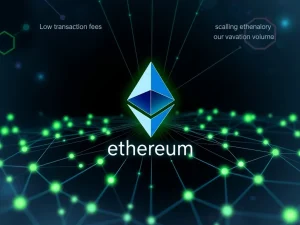Urgent Warning: EIP-7702 Exploit Endangers WLFI Token Holders Through Crypto Phishing

Cryptocurrency holders face constant threats. A new wave of attacks targets World Liberty Financial (WLFI) token holders. This alarming trend uses a ‘classic EIP-7702 exploit’ method. It leverages sophisticated crypto phishing techniques. Many users report their WLFI tokens are being drained. This article details the exploit, offers solutions, and provides essential security advice.
Understanding the EIP-7702 Exploit Mechanism
The core of these recent thefts involves the EIP-7702 exploit. This vulnerability is tied to Ethereum’s Pectra upgrade. Introduced in May, EIP-7702 aims to enhance user experience. It allows external accounts to temporarily function like smart contract wallets. This feature permits delegated execution rights and batch transactions. These functions streamline interactions on the Ethereum network. However, malicious actors have found a way to weaponize this upgrade. They exploit its functionalities to steal assets.
SlowMist founder Yu Xian highlighted this dangerous trend. He explained how hackers pre-plant a malicious contract address. This address sits dormant in victim wallets. When a deposit, like WLFI tokens, occurs, the contract activates. It swiftly snatches the newly arrived tokens. This method requires a critical prerequisite: a private key compromise. Without access to a user’s private key, the hackers cannot initiate this delegate contract. Therefore, the initial breach often stems from successful phishing campaigns.
The Anatomy of a Crypto Phishing Attack Leading to Private Key Compromise
The journey to token theft often begins with crypto phishing. Phishing attempts deceive users into revealing sensitive information. This typically includes their private keys or seed phrases. Hackers employ various tactics. They create fake websites, send deceptive emails, or use fraudulent social media messages. These impersonate legitimate crypto projects or services. Once a user falls victim, their private key is compromised. This gives the attacker direct control over the wallet. Yu Xian emphasized that private key leakage is the critical first step. It enables the subsequent EIP-7702 exploit.
The attacker then uses the compromised private key. They pre-plant a delegate smart contract into the victim’s wallet. This contract is under the hacker’s control. It lies in wait for any incoming transactions. When the victim attempts to transfer tokens, the pre-planted contract intervenes. It redirects funds, including gas fees, to the hacker’s address. This happens almost instantly. Victims often find their wallets emptied before they can react. This method has proven particularly effective against WLFI token holders.
WLFI Token Holders Under Siege: A Case Study in Exploitation
The newly launched WLFI token, backed by Donald Trump, quickly became a target. Trading began Monday morning with a supply of 24.66 billion tokens. Almost immediately, reports of theft surfaced. An X user reported a friend’s WLFI tokens drained. This occurred after transferring Ether (ETH) into their wallet. Yu Xian identified this as a clear example of the ‘Classic EIP-7702 phishing exploit.’ The attack specifically targets wallets with leaked private keys.
Victims often realize the theft when trying to move funds. As soon as they input gas for a transaction, the hacker’s contract intervenes. It automatically transfers the gas and other tokens away. This creates a stressful race against the hacker. One user, hakanemiratlas, described the struggle. They managed to transfer only 20% of their WLFI tokens. The remaining 80% remain stuck in the compromised wallet. This highlights the speed and efficiency of these automated attacks. The threat looms large for these locked tokens.
Community Concerns and Calls for Enhanced Ethereum Security
The WLFI community forums reflect widespread concern. Many users report similar issues. Anton, another user, noted the problem’s scale. He suggested the token drop implementation contributes to the issue. Wallets used for the WLFI whitelist were required for presale participation. This links compromised wallets directly to potential token allocations. Anton warned that automated sweeper bots steal tokens instantly upon arrival. This leaves no chance for users to move them to secure wallets. He requested the WLFI Team consider a direct transfer option. This would help mitigate the risk for affected users. Such a feature could offer a crucial layer of Ethereum security for at-risk participants.
The WLFI team has also issued warnings. They identified numerous scams around the token launch. Analytics firm Bubblemaps found ‘bundled clones.’ These are look-alike smart contracts imitating legitimate projects. The WLFI team explicitly stated they do not contact users via direct message. Official support channels are strictly through email. Users must always verify email domains before responding. This proactive communication is vital. It helps prevent further phishing attempts and protects users from fraudulent schemes.
Protecting Your Assets: Essential Ethereum Security Measures
Securing your cryptocurrency requires vigilance. Given the prevalence of the EIP-7702 exploit and crypto phishing, robust security practices are paramount. If you suspect your wallet is compromised, immediate action is crucial. Yu Xian suggests canceling or replacing the ambushed EIP-7702 delegate. Then, transfer all remaining tokens to a new, secure wallet. This process must be executed carefully. Even sending ETH for gas can be risky if the attacker is monitoring the wallet.
Here are key Ethereum security measures to protect against private key compromise:
- Use Hardware Wallets: Store your private keys offline. Devices like Ledger or Trezor offer superior protection.
- Enable Two-Factor Authentication (2FA): Apply 2FA wherever possible. This adds an extra layer of security.
- Be Wary of Phishing: Always verify URLs. Check sender emails for legitimacy. Never click suspicious links.
- Never Share Private Keys: Your private key is your access to funds. No legitimate service will ever ask for it.
- Regularly Audit Wallet Permissions: Review smart contract approvals. Revoke any suspicious or unused permissions.
- Stay Informed: Follow reputable security experts and news sources. Understand new threats and vulnerabilities.
The ongoing attacks on WLFI token holders serve as a stark reminder. The digital asset landscape requires constant vigilance. Developers continue to improve security features. However, individual responsibility remains critical. By understanding the mechanisms of attacks like the EIP-7702 exploit, users can better protect their investments. Always prioritize the security of your private keys. This forms the bedrock of your crypto safety. Stay safe and informed in the evolving world of decentralized finance.








